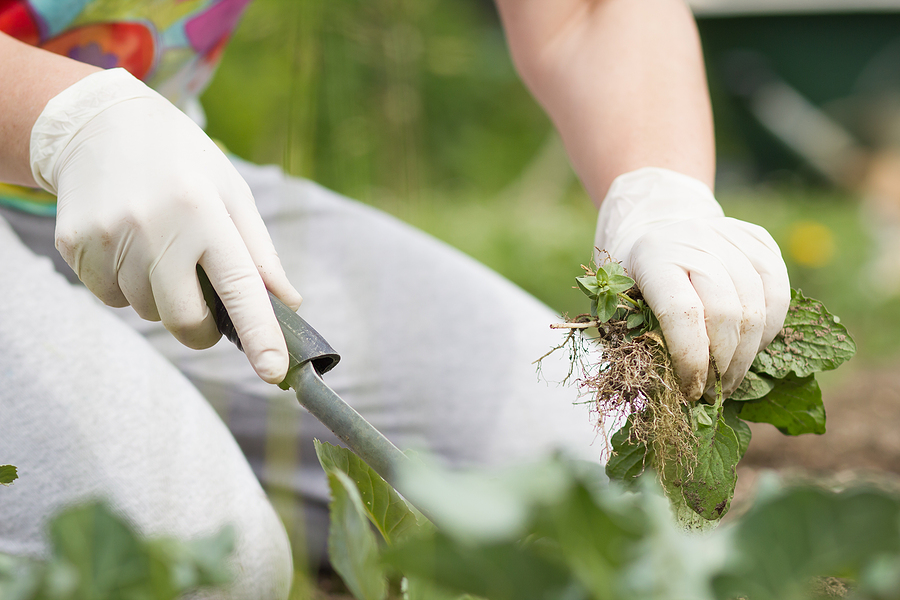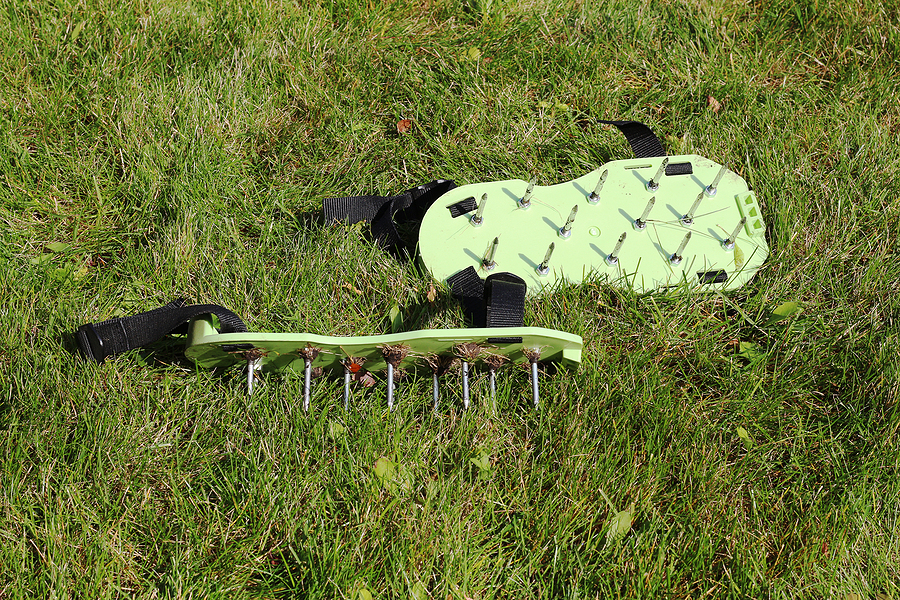Lawn care tips for spring
If you are lucky enough to have a garden there is nothing better on warm spring and summer days, than enjoying a beautiful luscious green lawn.
It makes your whole garden look picture perfect and is a wonderful place to relax and enjoy nature. A well-kept lawn has other benefits such as keeping you and your family healthy by creating better air quality, cooling your surroundings and improving your property’s value.
Stepping into spring, your lawn like many other things is coming out of hibernation! This is the time when it is growing, so you should be actively thinking about lawn care. Lawn maintenance may seem like a lot of hard work, but if done properly will result in a stunning outdoor space and less work in the coming months.
So sharpen your tools, service your mower and let’s look at how to care for your lawn.
Weed Removal
First thing is first, removing pesky weeds from your lawn. They can get everywhere, and it can seem a daunting prospect tackling them! However, keeping on top of them means a healthier lawn in the long run.
Before starting you should identify the types of weed on your lawn, and then you can decide on the best method to remove them. Dandelions and thistles can be removed by a hand trowel whereas grasses and nettles need a fork for example.

There are a few different ways you can choose to remove weeds, either by hand, trowel or using a chemical weedkiller. For pulling weeds by hand you need to remove the whole weed and its roots which can be hard work! If you choose to use a hand fork or a trowel this can be a little less back-breaking.
Chemical weedkillers are an option however they are not great for the environment, and if you are not careful you can destroy desirable plants. When selecting one make sure it is appropriate for your lawn and follow the application instructions.
Fill in any holes left from weeding with good quality compost or top soil. The best way to keep weeds at bay is to mow your lawn regularly.
Mowing
When it comes to looking at lawn care for spring mow your grass down to just half its normal height to prepare it for raking and dethatching. Cutting grass too short can damage the soil and create bare patches on your lawn.
Try to mow when the weather has started to get a little warmer and the grass is dry, early evening is a good time of day. As the weather starts to improve and the grass grows faster you can increase your mowing frequency and reduce the height of the cut.
Dethatching
Once you have mown it is time to get rid of the winter debris that has built up over your lawn and carry out dethatching and moss removal. You can spot if you have a lot of dead plant material or thatch if your lawn seems bouncy underfoot or if you find a matted barrier between the grass and the soil.
Whilst a small layer of thatch under one inch is beneficial to your lawn, keeping moisture in and preventing weeds, too much can be bad and suffocate your lawn. If it is over an inch it stops vital nutrients reaching the grass roots and prevents them from growing. You can measure it easily by digging up a small layer of grass from your lawn.
Dethatching rakes are good for light and general thatch and moss on the majority of smaller lawns. Or you can choose to use a vertical mower if you have a larger garden. As dethatching can be stressful for your lawn, you should carry it out when the weather is warmer, there is moisture in the air and the grass can recover and grow.
Aeration
Once you have removed the top debris from the lawn you need to aerate it and let it breathe. Over the winter months the soil becomes compressed and dense rather than oxygen-rich. Aerating makes small holes in your soil to help with the absorption of air, water and essential nutrients. Once the soil and grass roots take in these nutrients they have the best chance of healthy growth.
There are various ways you can choose to do it but remember not to aerate when the conditions are particularly wet or dry. If you have a small to medium-sized lawn then a fork is a good option as are aerating sandals, or you may choose a slitter which is a series of blades on a roller.

If you have a large lawn then a corer which removes plugs of soil is a good way to aerate, and you can employ someone to do this if you do not feel confident.
New Grass Seed
Following on from raking and aerating you can overseed your existing lawn with new grass seed where you find bare, dry and thin patches.
Doing this in mid-spring is fine as long as the lawn gets enough water and the temperature is above eight degrees for germination. Choose the seed that is right for your lawn as there are different blends available depending on whether you have a fine lawn or one that is more hard-wearing.
If you have not fed your lawn for a few months then use a general lawn fertiliser three to four days before seeding or a pre-seeding fertiliser. If you have used weed or moss killer then you will need to wait longer.
Sow the seed evenly either by hand or with a seed spreader 10mm deep, then rake it into the soil and firm down by foot. Keep the seeded area moist over the following few days by watering and stay off your lawn if possible for up to 21 days. Once the new seedlings have started to grow and the grass is about two to three inches in length then you can mow again.
As with anything around the house inside or out, regular maintenance goes a long way. Follow these lawn care tips and you will have a spectacular looking lawn ready for the whole family to enjoy, all you need is some sun!
Melina - Assistant Editor
Latest posts by Melina - Assistant Editor (see all)
- 4 Homemade Sweet Treats for Easter - April 10, 2025
- Bowel Cancer Awareness Month : know the signs - April 5, 2025
- Playground Memories - March 10, 2025
- Banana bread with SunGold kiwis - February 20, 2025
- A tribute to Bob Marley - February 4, 2025



















